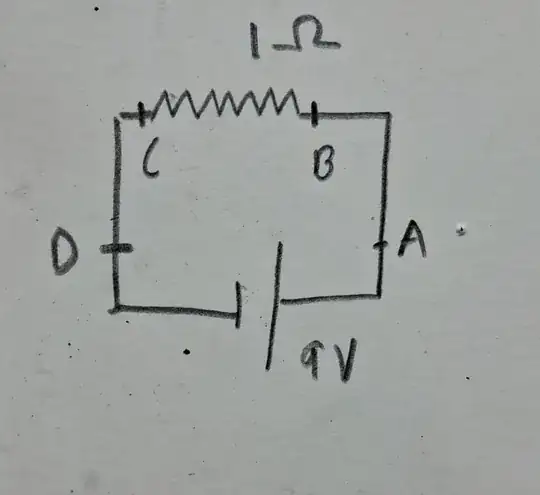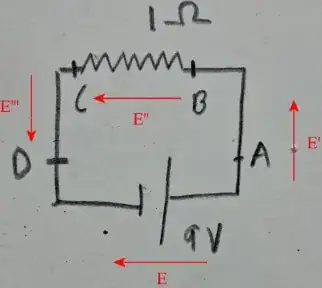In electrostatics we were taught that Voltage drop is the work done by an electric field in bringing a unit charge from point A to point B. Or $V= E.d$ where $d$ is the displacement between A and B. Till this point, I have no problem.
Now my doubt is that in a circuit the electric field created by the terminals must be constant right? So suppose I have a circuit consisting of a 9V battery and a 1-ohm resistor.
Let us assume that the distance between AB and BC is equal. Since $E$ is constant and $d$ is same, shouldn't $E.d$ be the same for both AB and BC? Why do we say that $V$ across AB is 0 while that across BC is 9? Why is the resistor affecting the term $E.d$?

